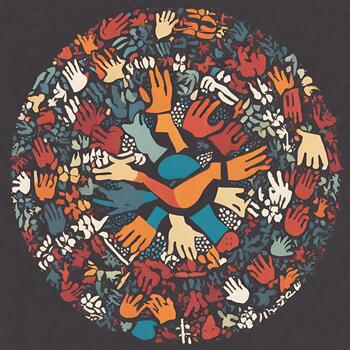We use cookies on this site to enhance your experience.
By selecting “Accept” and continuing to use this website, you consent to the use of cookies.

My Laurier International Cultural Conversation (LICC) journey unfolded through a tapestry of diverse beliefs, perspectives, and individual narratives. These discussions became a lens through which the richness of cultural differences became apparent, and the significance of unity in diversity resonated deeply. Much like a mosaic of varied experiences, LICC opened a space for reflection on my own journey and the collective tapestry woven by my peers and international companions. Exploring the concept of multiculturalism became a catalyst for personal growth, fostering a profound sense of development and acceptance within me. These LICC reflections have imparted a crucial lesson—that in our unique perspectives and ways of life, lies the essence of humanity. Through this shared understanding, I've come to appreciate the importance of treating each other with the respect we all deserve.
My most important takeaway from these discussions and conversations was the ability to learn and understand different cultural ways of doing and knowing through the breakdown of my own cultural identity and how impacts my behaviours, thoughts and perspectives. My group mates and I discussed various topics and had many enriching conversations about interculturalism, multiculturalism and cultural conflicts throughout our four months together, however, at the backdrop of all those interesting cross-cultural interactions was our own cultural ways of thinking and doing. Using Mike Bowlan’s iceberg model was vital to all of our discussions as it allowed us to identify how our cultures have impacted our biases, ways of thinking and actions. The use of this Iceberg model allowed us to understand our cultural differences through dialogue which created a beautiful multicultural environment in which we were all comfortable enough to discuss our differences and similarities. This experience opened my eyes to many new cultural perspectives and illuminated a path for my group members and me to complete cultural cohesion–giving me hope that through dialogue and understanding a true cohesive multicultural society can exist without assimilation or forced integration in which people of varying cultural backgrounds can live together in harmony.
As I reflect on the profound lessons gained from HR261, I realize that these insights extend beyond the classroom, offering valuable lifelong lessons applicable both socially and in a professional setting. The course has equipped me with the tools to navigate diverse cultural landscapes, fostering a spirit of inclusivity and understanding that will undoubtedly shape my interactions and contributions to a broader, multicultural world.
Tareq Elsarraj, HR 261, Human Rights & Human Diversity, Brantford